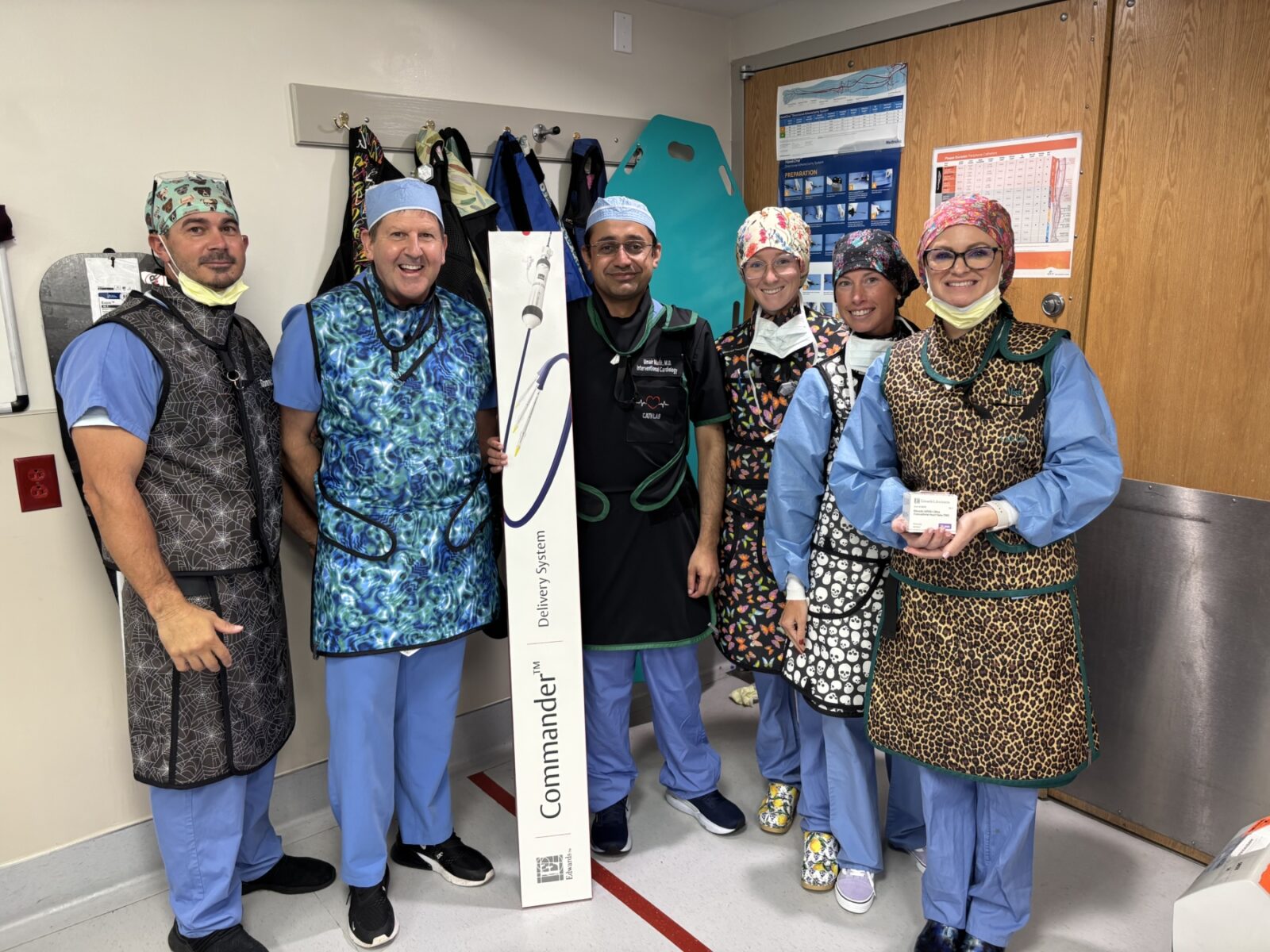Transcatheter Aortic Valve Replacement (TAVR)
Transcatheter Aortic Valve Replacement, better known as TAVR, is a groundbreaking medical procedure that can help people with heart valve problems. It’s a minimally invasive way to replace a damaged or diseased heart valve.
How does it work?
The heart has four valves that control the flow of blood in and out of the heart. If one of these valves isn’t working properly, it can cause a range of symptoms, such as shortness of breath, chest pain, fatigue, and lightheadedness. Traditionally, the way to fix a faulty heart valve was through open-heart surgery. This involves cutting open the chest and stopping the heart to replace the valve with an artificial one.
TAVR is a less invasive way to replace a faulty heart valve. It involves inserting a catheter through a small incision and threading it up to the heart. The new valve is then implanted inside the old one, and it takes over the job of regulating blood flow.
Is TAVR surgery?
Unlike surgery, TAVR does not involve opening the chest. The average TAVR procedure is 1 hour compared to open heart surgery, which lasts about 4 hours. Most patients return home the next day and have a shorter recovery time, getting them back to everyday activities. TAVR should be considered for all severe aortic stenosis patients who are experiencing symptoms.
Benefits of TAVR
One of the biggest benefits of TAVR is that it’s much less traumatic than open-heart surgery. It doesn’t require stopping the heart or cutting open the chest, so the recovery time is potentially much faster. Patients typically only need to stay in the hospital for a few days, and they can often return to their normal activities within a week or two.
Additional benefits may include:
- Improved heart function
- Relief of symptoms
- Improved quality of life following the procedure
- Most patients go home the next day and recover quicker
- Less pain and anxiety
- Minimal scarring
The most serious risks of TAVR include death, stroke, serious damage to the arteries, or serious bleeding.
Who is TAVR for?
TAVR is recommended for people who are considered high-risk for open-heart surgery. This might include older patients, patients with other medical conditions, or patients who have had previous heart surgeries. It’s important to talk to your doctor about whether TAVR is the right option for you.
If you’re experiencing symptoms of a faulty heart valve, such as shortness of breath, chest pain, fatigue, or lightheadedness, talk to your doctor about whether TAVR might be the right option for you. TAVR can help improve your quality of life and reduce your risk of serious complications.
Don’t wait. Ask your doctor for a TAVR evaluation today.
If you’re experiencing symptoms like shortness of breath and chest pain, it’s time to act. Waiting isn’t an option. Without treatment, up to 50% of patients with severe aortic stenosis will die within an average of 2 years after symptoms appear.
Aortic stenosis is a progressive disease that affects up to

Once it advances to the severe stage, the deadly disease won’t wait for you to delay treatment.
After the onset of symptoms, patients with severe aortic stenosis have a survival rate

at 2 years, without heart valve replacement.
On average, transcatheter
aortic valve replacement is a

that can treat your severe aortic stenosis, with next day discharge for most patients. This allows you to get back to your life quicker.
The Valve Clinic
Memorial Medical Office Building
1340 Broad Avenue | Suite 320
To request an appointment, call (228) 575-2415.


